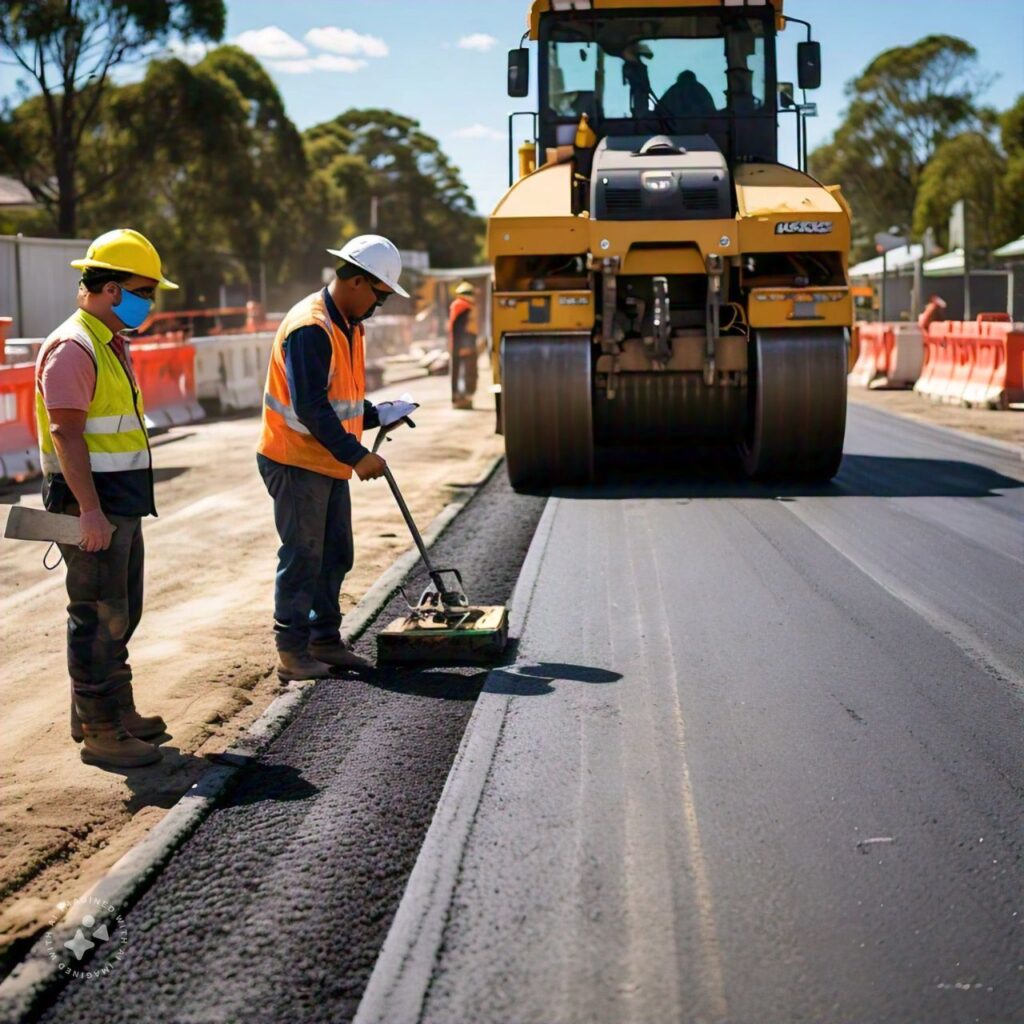In the constantly shifting climate of Melbourne, where the weather whimsically dances through seasons in a single day, the debate between using asphalt and concrete for roadways isn’t just technical—it’s practically an art form. Here’s a deeper look into how both contenders in asphalt concrete services sculpt the city’s streets under the unique pressures of Melbourne’s climate, focusing on durability, cost-effectiveness, and their performance on the urban stage.
1. Sculpting Durability: Material Responses to Melbourne’s Capricious Climate
Asphalt: Renowned for its flexibility, asphalt is the contortionist of road materials, adeptly bending with Melbourne’s erratic temperature dips and surges without cracking under pressure. This elasticity makes it a favoured choice in the repertoire of asphalt concrete services. However, like any performer, asphalt has its kryptonite—extreme heat. On the hottest summer days, it can become too pliable, potentially warping under the weight of traffic.
Concrete: Concrete, with its stoic and sturdy composition, is the enduring monolith on Melbourne’s roads. It stands firm against the thermal theatrics but can be unforgiving when faced with unexpected plot twists like sudden frosts, leading to cracks that mar its otherwise pristine performance.
2. The Cost of Continuity: Maintenance Narratives
Asphalt: Asphalt may initially come across as the more budget-friendly option with lower installation costs and an impressive ability to heal quickly—more minor potholes and cracks can be patched up seamlessly, making it a hit in the ongoing maintenance saga. This makes asphalt an economical star in the drama of asphalt concrete services, especially when frequent touch-ups are part of the script.
Concrete: Concrete demands a higher upfront investment, akin to setting the stage with a grand opera house. It promises a longer lifespan with fewer interventions, assuming the weather gods play their part. However, when unexpected calls for repairs occur, disruptions can be extensive and expensive, turning budget management into a high-stakes production.
3. Performance Art: Adapting to Weather Extremes
Asphalt: In the rainy acts of Melbourne’s weather play, asphalt takes the spotlight with superior traction, reducing hydroplaning and ensuring safety. Its dark hue absorbs more heat, which helps in melting away any unwelcome frosty patches swiftly, offering a slight edge during chillier scenes.
Concrete: Concrete shines under the scorching sun, reflecting light and keeping urban heat islands at bay—a boon for the city’s core. However, its reflective nature can turn slippery when the stage is wet, extending braking distances and raising the curtains on potential safety concerns.
4. Interactive Roadways: The Sensor-Embedded Future
Imagine roads that communicate—where asphalt and concrete aren’t just surfaces but integral parts of Melbourne’s intelligent city infrastructure. Embedding sensors within these materials could monitor road conditions, traffic patterns, and environmental impacts. This futuristic viewpoint could discuss how asphalt’s flexibility and concrete’s rigidity are suited to integrating with technology that optimises traffic flow and enhances safety in real-time, transforming them from passive to interactive elements in urban planning.
5. The Aesthetic Angle: Coloring and Texturing Melbourne’s Roads
Dive into how asphalt and concrete can be more than just functional; they can be formative elements of urban beauty. Highlight the potential of coloured concrete to enhance the aesthetic appeal and reduce heat absorption or how textured asphalt can create visually distinct and safer pedestrian zones. This section explores how these materials contribute to Melbourne’s visual and practical landscape, turning mundane roads into works of art that reflect the city’s vibrant culture.
6. The Recycling Revolution: Paving the Way with Sustainable Practices
Focus on the environmental impacts of using recycled materials in road construction. Discuss how asphalt concrete services in Melbourne are pushing the boundaries by using reclaimed asphalt pavement (RAP) and recycled concrete aggregate (RCA) to pave new roads. This not only conserves natural resources but also reduces landfill waste. The narrative can explore the challenges and triumphs of recycling efforts in road construction, positioning Melbourne as a leader in sustainable urban development.
7. Noise Reduction Rhythms: The Soundproofing Qualities of Road Materials
Explore how different materials can influence the acoustic environment of urban areas. Concrete’s hard surface reflects sound, potentially increasing noise pollution, whereas asphalt can absorb sound waves, leading to quieter neighbourhoods. This section could propose innovative mixtures and laying techniques that enhance this property, particularly in residential areas of Melbourne, turning road construction into a consideration for auditory comfort and transportation efficiency.
8. Illuminated Pathways: Asphalt Concrete Services Light the Way
Imagine a future where the streets of Melbourne light up under your feet, reducing the need for traditional streetlights and enhancing urban aesthetics and safety. This section explores an innovative initiative by asphalt concrete services to integrate photoluminescent aggregates into asphalt mixtures. These glow-in-the-dark paths provide a futuristic appeal and offer a sustainable alternative to street lighting, illuminating bike lanes and pedestrian paths through energy harvested during the day.
9. The Scent of the City: Aromatic Asphalt Concrete Services
Delve into an experimental approach where asphalt concrete services add a sensory dimension to Melbourne’s aromatic asphalt streets. This concept involves infusing asphalt with essential oils to emit pleasant scents during the warmest parts of the day. It’s not just about masking the typical smell of hot asphalt; it’s about enhancing the pedestrian experience and potentially reducing road rage and stress in traffic.
10. Responsive Roadways: Asphalt Concrete Services with Reactive Properties
Explore the development of reactive asphalt that changes colour based on temperature fluctuations, developed by cutting-edge asphalt concrete services. This intelligent asphalt could turn blue when temperatures fall below freezing, warning pedestrians and drivers of icy conditions or change to a cautionary colour during extreme heat to signal the risk of softening asphalt. This section can examine how such innovations are poised to revolutionise Melbourne’s road safety and driver information systems.
11. Asphalt Art Galleries: Showcasing Local Talent through Asphalt Concrete Services
Highlight how asphalt concrete services are transforming ordinary pavements into dynamic art galleries. In this unique initiative, local artists collaborate with engineers to create large-scale artworks embedded into Melbourne’s streets and sidewalks. These installations beautify the city and engage the community, turning everyday commutes into interactive cultural experiences. Discuss the process, the challenges, and the impact of turning asphalt into a canvas for public art.
Selecting asphalt or concrete for Melbourne’s roads is like casting the lead in a high-budget drama. Each material brings unique strengths to the stage, and the choice hinges on the script of local needs, budget allocations, and climatic peculiarities. As advancements in material science continue to evolve, the future of Melbourne’s roads looks set to embrace these innovations, ensuring that asphalt concrete services from Roadseal Civil can deliver performances that are durable and cost-effective and beautifully adapted to the local climate. This narrative of innovation ensures that the city’s infrastructure remains a testament to utility and ingenuity, reflecting Melbourne’s dynamic spirit.





